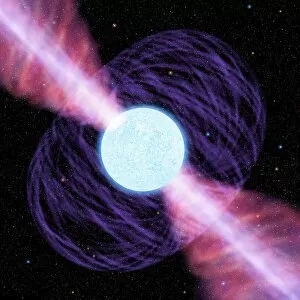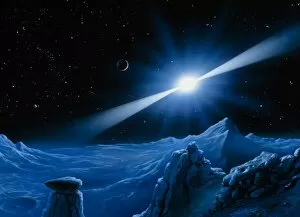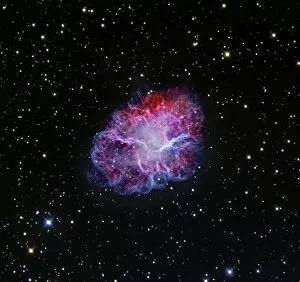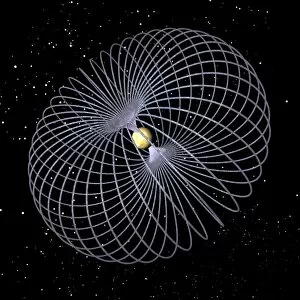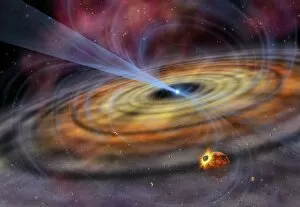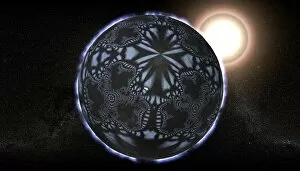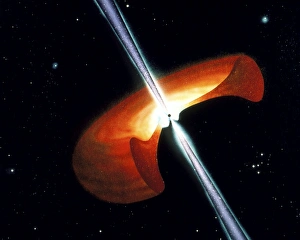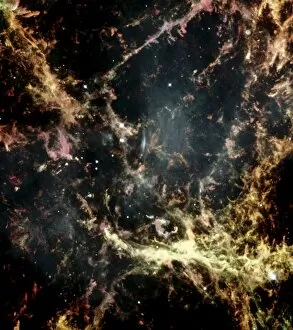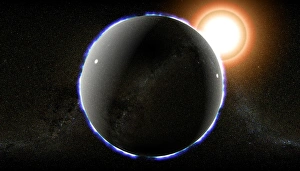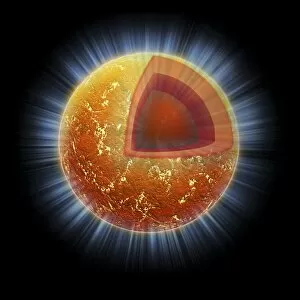Neutron Star Collection
"Unveiling the Enigmatic Neutron Star: A Celestial Symphony of Pulsars, Supernovae, and Microquasars" In this captivating artwork
All Professionally Made to Order for Quick Shipping
"Unveiling the Enigmatic Neutron Star: A Celestial Symphony of Pulsars, Supernovae, and Microquasars" In this captivating artwork, a pulsar takes center stage as it radiates its mesmerizing energy into the cosmos. With its rapid rotation and intense magnetic field, this neutron star emits beams of electromagnetic radiation that create a celestial light show akin to a cosmic lighthouse. As we gaze upon the scene, our eyes are drawn to the backdrop of a distant planet bathed in the ethereal glow of the pulsar's emissions. The interplay between these two celestial bodies creates an otherworldly spectacle that captivates our imagination. Further exploring this cosmic tapestry, we encounter another masterpiece – an artwork depicting a supernova remnant known as F008 / 3658. This explosive aftermath showcases remnants of stellar destruction and serves as a reminder of nature's awe-inspiring power. Moving on from supernovae to microquasars, we witness X-ray binary systems F006 / 9719 and F006 / 9712 depicted in stunning detail. These enigmatic objects consist of compact stars accreting matter from their companion stars while emitting powerful jets of high-energy particles. Their dynamic nature adds yet another layer to our understanding of neutron stars' extraordinary behavior. Our journey through space art continues with an enchanting portrayal: planets orbiting pulsars. In this imaginative rendering, we witness how these exotic worlds navigate their unique gravitational environment while basking in the radiant presence of their central neutron star. Finally, we encounter one last marvel - Magnetar star C016 / 8871 depicted in all its magnetically charged glory. These rare and immensely powerful neutron stars possess magnetic fields trillions times stronger than Earth's own magnetic field – truly pushing the boundaries for what is possible within our universe. Through these artistic interpretations and scientific discoveries alike, humanity delves deeper into the mysteries of neutron stars.

